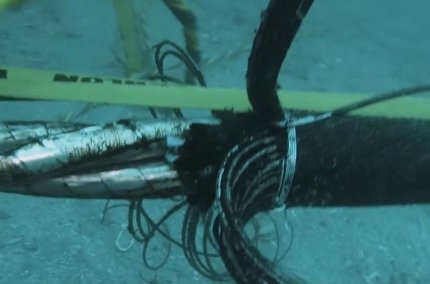According to the head of the Swedish Ministry of Defense, Carl-Oscar Bolin, damage to the Nordbalt submarine cable connecting Sweden with Lithuania has been recorded at the bottom of the Baltic Sea.
Points of attention
- Damage to the Nordbalt submarine cable connecting Sweden with Lithuania in the Baltic Sea has raised concerns about security measures to protect such underwater infrastructure.
- The Chinese vessel Yi Peng 3 is suspected of being involved in the cable damage, with investigators considering intentional damage as a possibility.
- Accusations against Russia for damaging undersea cables in the Baltic Sea have surfaced, leading to speculation about potential motives behind such actions.
- Sweden has deployed warships, coast guard vessels, and surveillance aircraft to strengthen security in the Baltic Sea amid concerns of attacks on critical underwater infrastructure.
- The investigation into the incidents is ongoing, with no official charges filed yet, as Sweden and Finland exercise caution in directly accusing any party of being responsible for the damages.
Who could be to blame for another damage to an undersea cable in the Baltic Sea?
It is noted that damage from an anchor tug was found on the cable.
Bolin stressed that the cable was likely damaged by the Chinese vessel Yi Peng 3. This vessel has already been implicated in severing and damaging submarine cables connecting Sweden and Lithuania, as well as Germany and Finland.
The damage occurred while the ship was anchored approximately 160 km from shore.
Investigators are currently investigating the circumstances of the incident and are inclined to believe that the cables were damaged intentionally.

Investigators believe that Captain Yi Peng 3 was recruited by Russian intelligence services.
The Swedish Defense Minister also added that all incidents involving damage to underwater cables could be related to the disconnection of the Baltic countries from the Belarusian-Russian power grid.
The last in a series of these outages is planned for February of this year.
"The Swedish media reports show that we cannot believe in the coincidence of what is happening in the Baltic Sea. We must take these cases of sabotage or attempted sabotage of this infrastructure very seriously. And this shows that a rapid NATO response is necessary to protect the interests of our consumers and, in fact, our entire infrastructure, as well as the electricity market and price stability," said Arnoldas Pikžirnis, Deputy Minister of Energy of Lithuania.
According to journalists from the Voice of America, Sweden is currently sending three warships and four coast guard vessels to strengthen security in the Baltic Sea and prevent attacks on critical underwater infrastructure.
According to an official statement from the Swedish government, in addition to the above vessels, seven more ships will be on standby, and an ASC 890 surveillance aircraft will be deployed to monitor the situation.
Although Russia's involvement is among the main theories being considered, no official charges have been filed. The investigation is ongoing, and Sweden, along with Finland, has refrained from making direct statements about who was responsible for the incidents.
What is known about Russia's involvement in the damage to submarine cables in the Baltic Sea?
According to Reuters, citing the head of the investigation, Risto Lohi, from the Finnish National Bureau of Investigation, the crew of the Eagle S oil tanker, which is accused of damaging the Estlink 2 submarine cable between Finland and Estonia, intended to cut other submarine cables and pipelines.
Risto Lohi noted that at the time of the vessel's detention, the tanker was threatening to cut the Estlink 1 power cable and the BalticConnector gas pipeline between Finland and Estonia.
There would be an almost immediate danger that other cables or pipes connected to our critical underwater infrastructure could be damaged, a representative of the Finnish National Bureau of Investigation said.
He added that a ninth crew member of the vessel had been added to the list of suspects and was banned from traveling.













